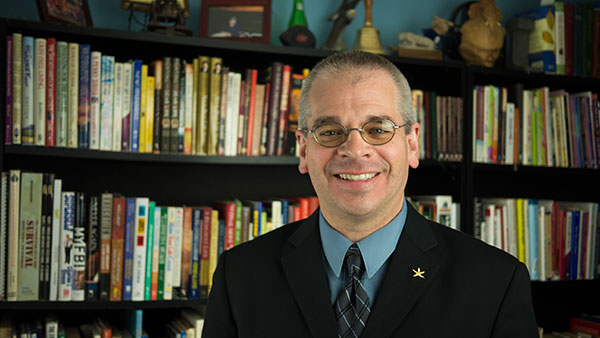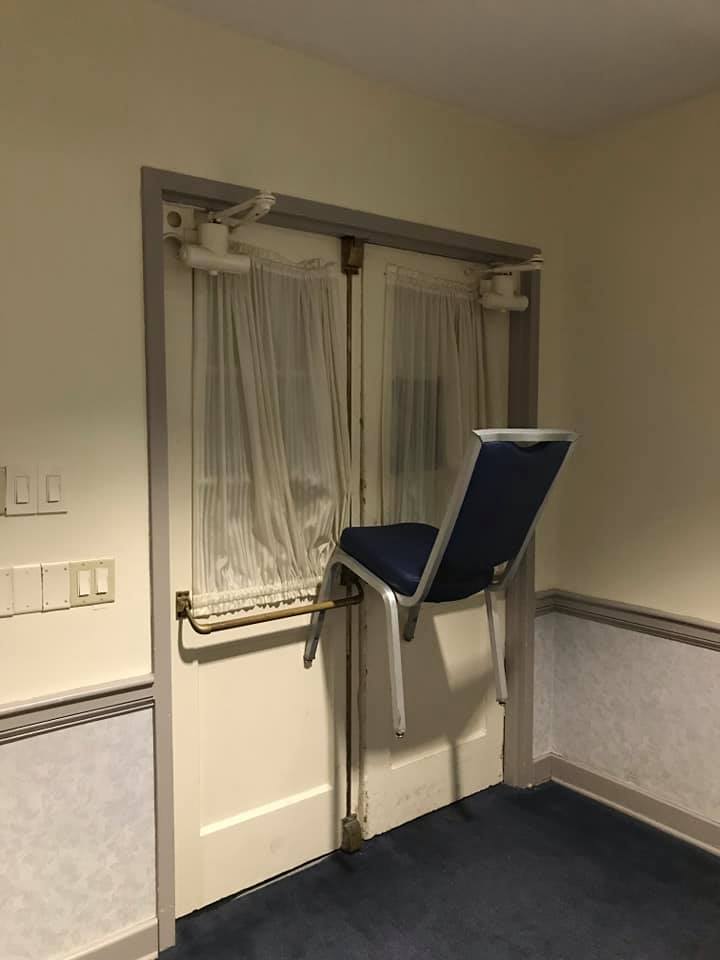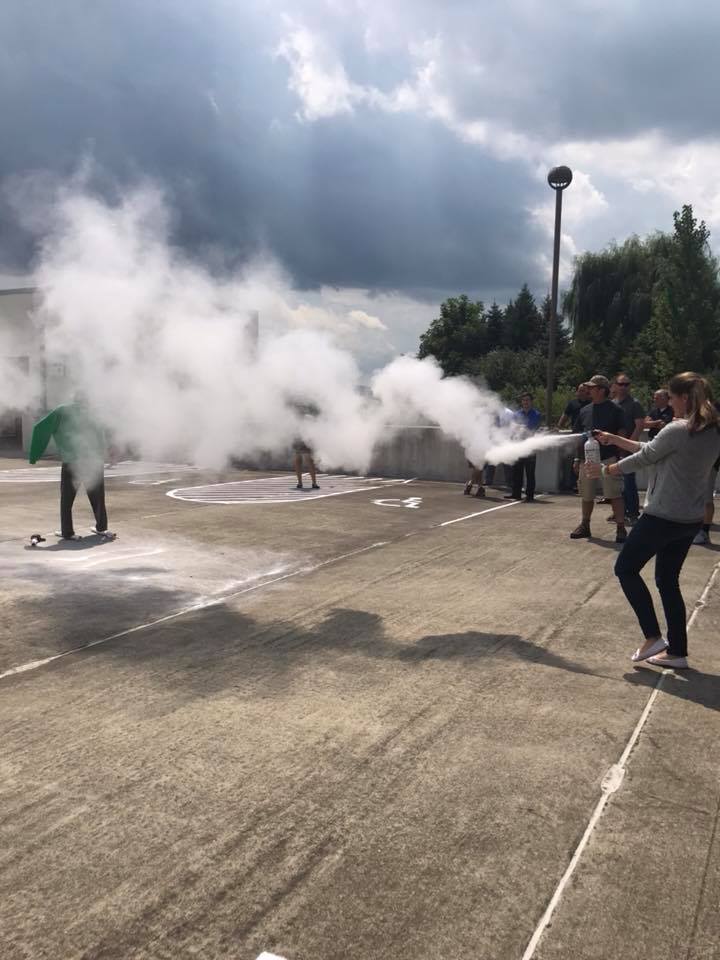
Rick Capozzi ’85 was an hour into his vacation when he got a call from his boss at Penn State University. A gunman had killed 32 people on the campus of Virginia Tech.
“What happened at Virginia Tech, I don’t ever want to happen at Penn State,” his boss told him. “Put something together.”
With a full schedule of projects and no military or law enforcement background, Capozzi wasn’t sure if he was the right person for the job.
“I was concerned with not being a subject matter expert,” Capozzi said. His boss said that didn’t matter, as they had expertise through University Police, who was the partner in the project.
What they needed was a learning strategist and instructional designer who could work with law enforcement to create a program that would challenge people's comfort levels but not be so over the top that people freaked out and shut down. Within nine months, it was one of the most popular programs his department had ever developed.
Capozzi left Penn State soon after that and was busy with his company, CapozziGroup, which provided soft skills training. He was no longer involved in teaching people what to do in an active shooter situation, but when a friend asked him to present on the topic at a regional conference, he realized he had learned too much to just let it go.
He started from scratch build a new program: he did research, watched incident videos, read court transcripts and coroners' reports. What was in (the shooters') bloodstreams, and was that an influence?
Prepare. Respond. Survive.
SurvivalMindset's tagline is "Prepare. Respond. Survive."
"I'm very research driven. I'm not a cop, not a military guy, not an attorney, not a medic – but I work with all of them to pull the best information," Capozzi said. "I'm the conduit to the experts. I'm a learning strategist who specializes in behavioral change in stressful situations. If someone is in your building with the intention to kill as many people as possible, how do we change behavior to keep people from freezing?"
To that end, Capozzi leads groups in creating mind maps – plans they've rehearsed in their heads and maybe in real life: "I would go out the door, I would turn right."
"It's not until you go through this process that you see 'If I go this way, it will
put me in a bad spot,'" Capozzi said.
"We don't just run drills. We walk through the building in different zones. What would
you do if you were in this part of the building? We teach techniques to barricade
doors, to stay out of the kill zone," he said."


In the Marjory Stoneman Douglas High School shooting in Parkland, Florida, 17 people were killed and another 17 were wounded, but the shooter never once went into a classroom.
"All of the shootings were from outside of the door. If you can see into the hallway, you're not in a good place," Capozzi said. "Sometimes the best place to be is to the left or right of the door. The shooter can't see there, and it's difficult to get shots there."
In the event of a tragedy, Capozzi said the national "Stop the Bleed" campaign to train bystanders really does make a difference.
"The greatest opportunity to save lives is in the first 300 seconds after the attack stops," Capozzi said. He noted that at Marjory Stoneman Douglas, it was 5 minutes and 37 seconds from when the last shot was fired until the first law enforcement officer entered the building, then additional time before emergency personnel were able to render aid.
"An attack (typically) doesn't last very long, but it can take a long time for the
people who render aid to get to the victim. Law enforcement's job is to take out the
threat – they will step over bleeding people to stop the threat."
Capozzi's Survival Mindset training teaches civilians how to respond.
"Bottom line is that if you get shot from the collar bone down and we get you on the operating table in 'the golden hour' while your heart is still beating, there's a greater than 90 percent survival rate in the U.S. The tricky part is stopping the bleeding and getting the victim to adequate medical attention."
He said that because of quick actions of students who knew how to respond, nobody died at the April 2014 stabbing at Franklin Regional High School in Murrysville after a student came in with butcher knives and stabbed 20 students and a security guard.
"One girl was bleeding out in the hall. Two guys grabbed her by the ankles and dragged her out the door. LifeFlight had just lifted off for another reason and landed in the parking lot. They got the girl on the helicopter and to the hospital. If any of those things hadn't happened, there's no way she would have made it," he said.
"Another student had a brachial artery bleed. His friend sat on the floor with him, holding pressure on the wound, knowing the attacker might come in and stab him, too," Capozzi said.
He advises schools and offices to keep trauma kits which include essential "stop the bleed" items such as tourniquets and packing gauze.
Common denominators
As Capozzi has studied data from the mass shootings, he has found areas that the shooters
have in common.
"The most common denominator is loneliness. It doesn't matter who the person is, it's almost always a lonely individual. It comes from a feeling of rejection," Capozzi said.
"The second most common denominator – and hardly anyone is talking about it – is the significance of psychotropic drugs in the blood stream," he said. "A lot of people have chemical imbalances and need (the medications); we don't want people who need those medications not to take them."
He added that problems occur when the medications are not prescribed correctly or not taken correctly, or are taken in combination with alcohol or other drugs.
Another common factor in the shootings is planning.
"In pretty much every single incident, there's been some sort of leakage when the person expresses their intent through social media, their writings or artwork, or conversation," he said. "This is the opportunity to possibly prevent or intercept an attack."
Protecting ourselves and our students
Capozzi said he looks forward to the day that his services are no longer needed, and
he believes that will become the case.
"When was the last time you heard of a child dying in a school fire? There are school fires all the time, but since 1958, we've changed a lot – we've incorporated sprinkler systems, installed fire extinguishers, changed building codes, implemented fire drills," he said.
Until that day comes, Capozzi teaches people how to be defensive in an active shooter situation.
"A fire extinguisher is a great tool in an armed intruder situation. If you ever hear shots and there's a fire extinguisher nearby, grab it, pull the pin and get ready to blast the bad guy in the face," he said. "Or, on retreat, fill the hallway with the dry chemical – it makes a big cloud, and if the bad guy runs into it, breathing heavily in the first place, he will have trouble breathing, and it will be difficult for him to see."

Situational awareness is key. Look at items within reach to see what can be used as
a weapon:
• What's sitting right on your desk that you can throw? A coffee cup, a stapler?
• What can be used as a club? A long-armed stapler?
• What can be used for cutting or stabbing? Scissors or a glass that can be broken
and the base held for a counterattack?
Capozzi's SurvivalMindset will have public training seminars Feb. 7-8 in Albion, Erie County, and Feb. 11 in Franklin, Venango County. For information or to register visit http://SurvivalMindset.us/.